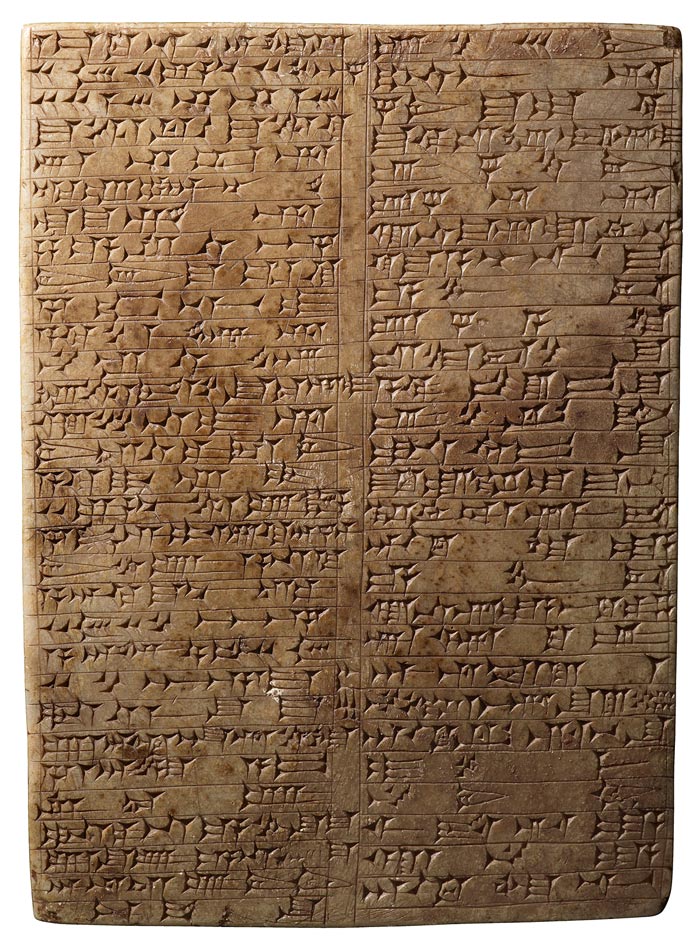
Tukulti-Ninurta I, whose name means "my trust is in (the warrior god) Ninurta," was the first king of Assyria not to respect the sanctity of the city of Babylon. Claiming almost divine honors, he took its defeated king as well as the statue of Marduk, its god, into captivity in order to ensure complete Assyrian supremacy over Mesopotamia. At Assur, the Assyrian capital, he undertook extensive building programs, including the restoration of the Ishtar Temple referred to in this tablet. (For a complete translation of the tablet, see the back of the panel.) Because of his sacrilege and excesses, things did not end well for Tukulti-Ninurta. His son and successor imprisoned him in and set fire to the new capital he built across the river from Assur.
Mesopotamia, Middle Assyrian period, Reign of Tukulti-Ninurta I (ca. 1243–1207 B.C.)
